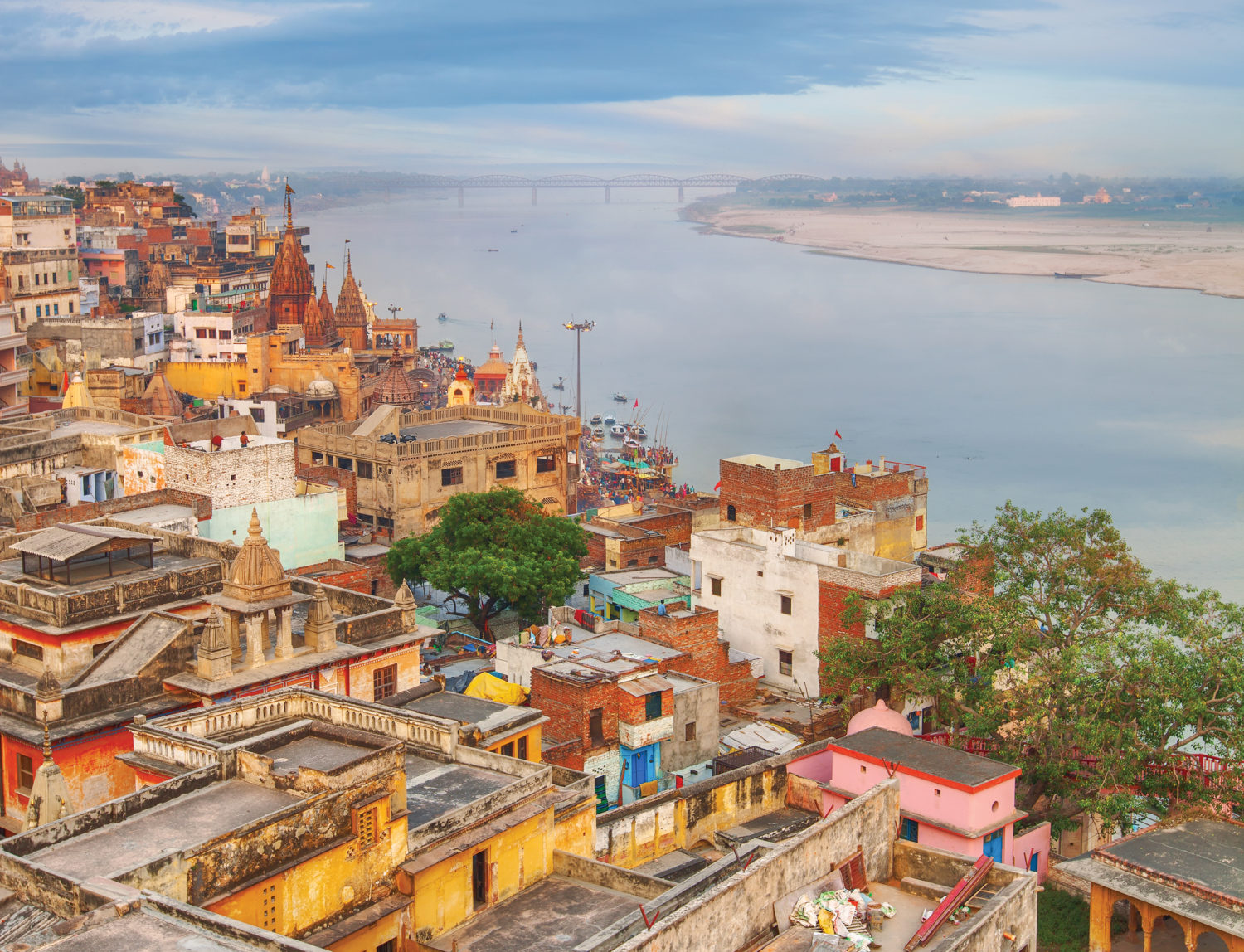“In . . . the Lotus Sutra, the Bodhisattvas of the Earth emerge dynamically from the earth. Their number is likened to 60,000 times the grains of sand of the Ganges River. This brilliant array of innumerable Bodhisattvas of the Earth, each leading equally innumerable retinues of followers, appears from the depths of the earth.”[1]
—SGI President Ikeda
Believers of the Hindu faith aspired not only to bathe in the Ganges but to end their days there and have their ashes cast into the river. The great Mother Ganges flowed quietly, the flames of the funeral pyres reflecting on the water’s surface.
Facing the leaping flames, Shin’ichi Yamamoto pressed his palms together, chanting Nam-myoho-renge-kyo for the eternal happiness of the deceased.
Although they were told that the waters of the Ganges were low at this dry time of year, the river’s girth was of such monumental dimensions that the opposite bank was almost indiscernible in the distance.
“Its current is so quiet,” Shin’ichi remarked.
Everyone nodded. He continued, speaking unhurriedly: “A great river flows with quiet dignity. Quietude indicates depth, richness and capacity. Its waters irrigate the vast plains and benefit the people.
“Right now, the Gakkai is like a mountain stream, but eventually it will turn into a great river. A mountain stream courses through valleys, crashing against rocks and throwing up tumultuous spray as it rushes on its way. Undergoing these trials, it becomes a truly great river. Right now, we just have to concentrate on running with all our might. The efforts we make will further expand our flow. Charging forth with single-minded purpose is the spirit of youth.”[2]
You are reading {{ meterCount }} of {{ meterMax }} free premium articles

